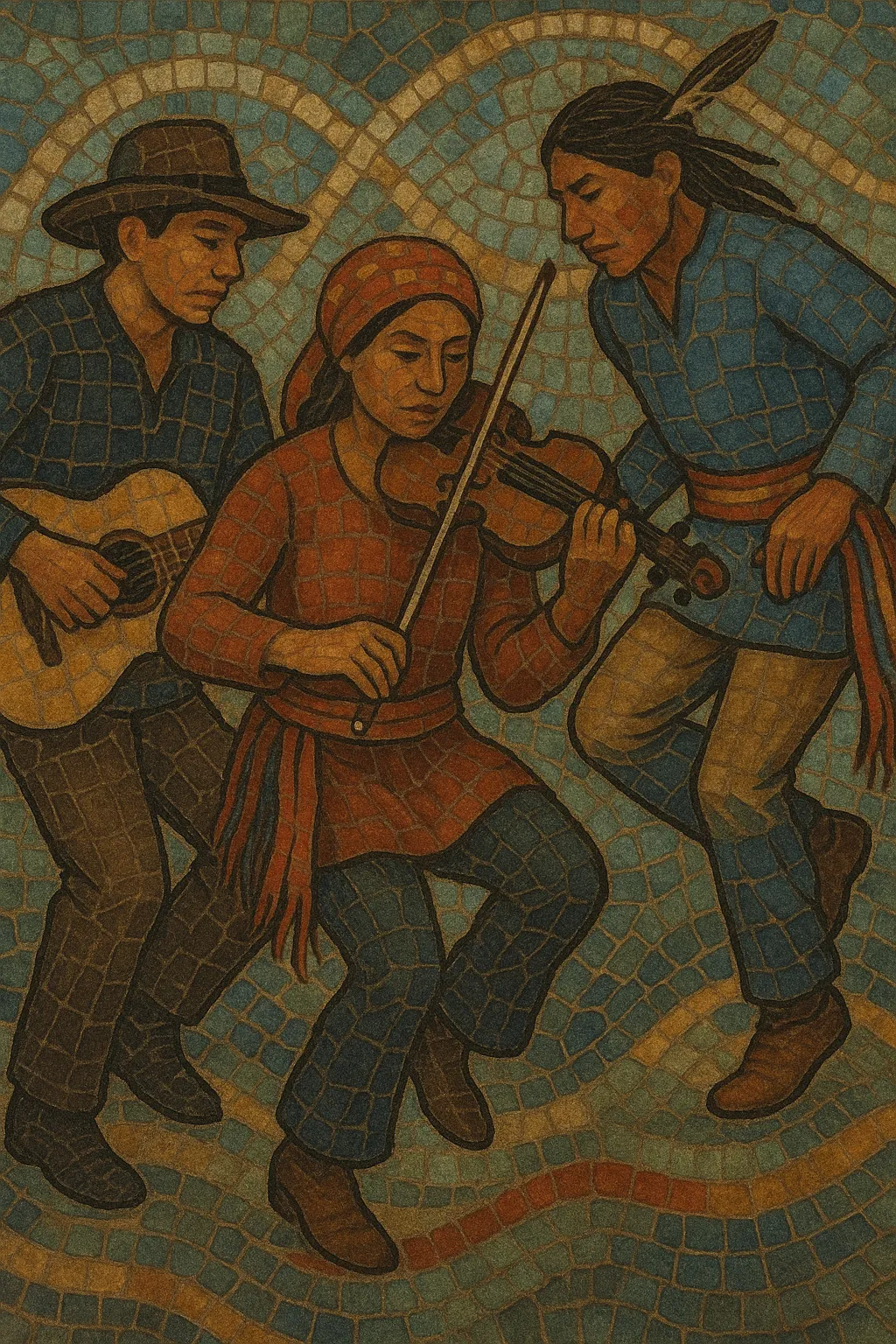Métis music is the traditional music of the Métis people of the Canadian Prairies, forged during the fur‑trade era through the blending of First Nations (especially Plains and Woodland), French, and Scottish/Irish settler traditions.
Its most emblematic expression is step‑dance fiddle music—led by the violin with percussive foot‑stomping—featuring reels, jigs, polkas, and waltzes, often played in a distinctly "crooked" manner (irregular phrase lengths or added beats) and with strong off‑beat accents. Ornamented bowing, droning double‑stops, and a driving, dance‑centric groove give the style its unmistakable lift. Songs and dance calls can be performed in Michif (the historic Métis language), French, English, or a mix.
The Red River Jig—despite its name, typically played in reel time—is the signature tune and social dance, showcasing virtuosic footwork, competitive improvisation, and communal celebration. While primarily a fiddle tradition, guitar, piano, and hand percussion (spoons, frame drum) are common accompaniments.
Métis music emerged in the Red River region (present‑day Manitoba and surrounding Plains) as Indigenous peoples and French, Scottish, and Irish settlers intermarried and formed a distinct nation. Fiddles arrived via voyageurs and traders, meeting Indigenous dance and song traditions. The result was a new syncretic dance music whose repertoire drew on reels, jigs, and quadrilles while adopting Indigenous rhythms, vocal inflections, and social functions.
By the mid‑19th century, hallmark features—percussive foot‑stomping, syncopated bowing, drones/double‑stops, and "crooked" phrase structures—were well established. The Red River Jig became the archetypal showpiece for dance contests and community gatherings, alongside Métis variants of waltzes, polkas, schottisches, and two‑steps. Tunes were transmitted orally, with regional families and communities cultivating identifiable styles.
Policies of assimilation and residential schools suppressed Indigenous cultural practices, but Métis music persisted in homes, road allowances, and community halls. Local radio, house parties, and emerging recordists captured influential fiddlers, helping preserve style elements even as country and popular dance bands grew.
From the 1970s onward, cultural resurgence, festivals, and competitions (e.g., John Arcand Fiddle Fest) elevated Métis music’s profile. New generations professionalized the tradition, produced recordings, and taught workshops. Today the style thrives on stages and in communities, with artists incorporating piano/guitar accompaniment, new compositions, and educational projects while centering the dance and social roots of the music.


